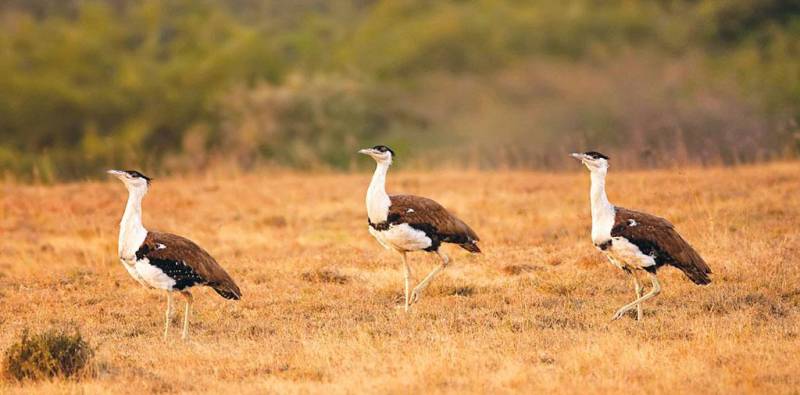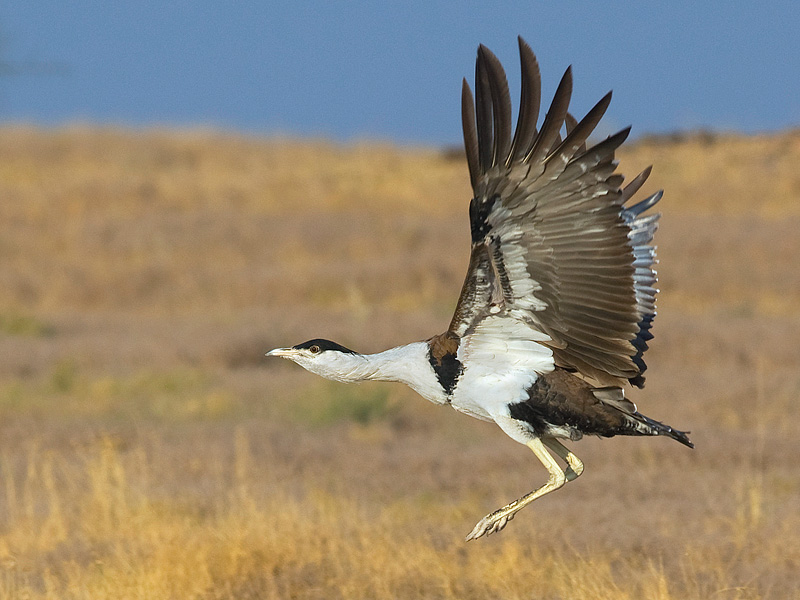Changes in habitat killing the Indian Bustard
By Rajeev Mathew
Hyderabad: The Great Indian Bustard is amongst the most threatened birds of India. It is embattled in its very habitat that is shrinking alarmingly.
These birds – the bustards – are grassland birds adapted to live in open stretches of sub-humid to semi-arid landscapes. These areas are often fallow and inhabited by a myriad of animals and insects. The predominant plant species are the several species of grasses.
Rodents and insects make a bulk of the biomass here. They are an important species, almost a keystone species in this habitat. Their tunnels and burrows are the main sources of seepage of what moderate to scant rainfall these areas receive. The insects keep the herbage in check while providing food for a myriad of species, especially the harriers that come in with the migration.
The larger animals are the Black Buck, the Chinkara and their main predator the wolf.
Over a period of time these habitats have been severely disturbed and now seem to be killing the Bustards.
Threats to bustards:
- Power lines. Males and females fly at different altitudes, males being heavier fly low while females fly high. Males, therefore, run a greater risk of flying into power lines.
- Wind turbines, the speed of the wings are not gauged by birds, so many collide with them. Wind turbines are installed in areas that are open, ideally suited are lands that are fallow and the habitat of bustards.
- The demise of the wolf has had a dramatic effect on blackbuck whose numbers have swelled uncontrollably. These animals have grazed the edible grasses to the ground and have become a serious problem animal for farmers.
- Locusts and grasshoppers that fed on the grasses get killed in the fields because of pesticides. Bustards then have nothing to feed on.
- In many areas – example Rollapadu – due to abundance of water due to canal irrigation, farmers have shifted from dryland crops to wetland crops that are not suitable for bustards.
- Wild boars have come in the wake of wet cultivation and eat eggs and chicks of bustards and kill the wolf cubs.
- Temples have come up in these areas which have a huge human footfall and the harsh lights have driven the bustards away.
- Dogs used by shepherds have now turned feral and are killing wild animals like a hare and other lesser canids like foxes.
Due to multiple sets of adverse changes to their ecosystems, bustards are dying out especially since they are slow breeders.
The only way to revive the wild bustard population is to reverse these adverse while seeking cooperation from European and Middle-Eastern countries where the Great bustard (Europe) and McQueen’s bustard (Middle-East) have been successively bred in captivity and re-wilded.
